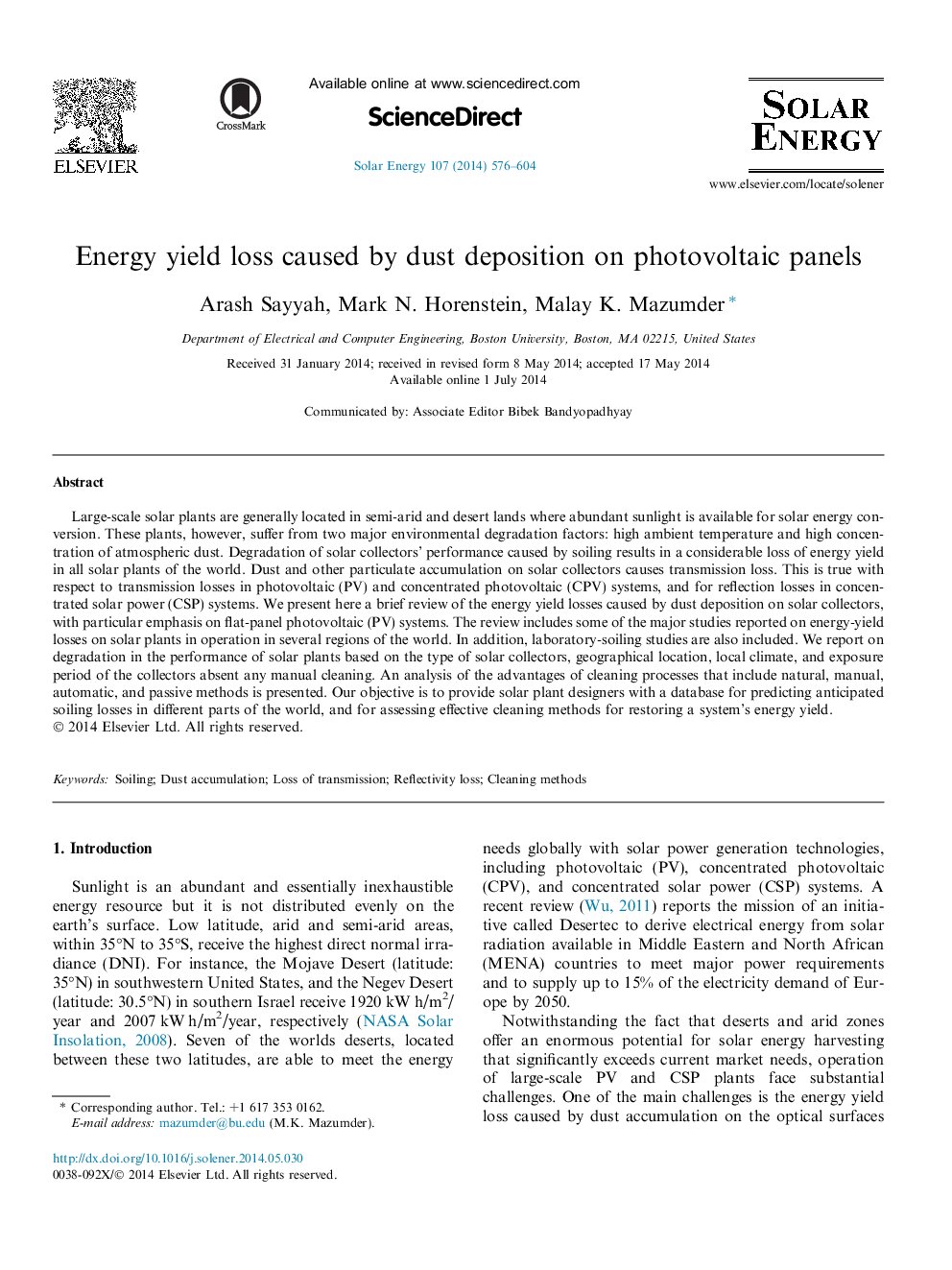| کد مقاله | کد نشریه | سال انتشار | مقاله انگلیسی | نسخه تمام متن |
|---|---|---|---|---|
| 1549963 | 1513111 | 2014 | 29 صفحه PDF | دانلود رایگان |
• Energy yield losses caused by dust deposition on photovoltaic modules are reviewed.
• We provide a database regarding soiling losses in different parts of the world.
• Environmental and design parameters of dust deposition are addressed.
• Laboratory, outdoor, and predictive soiling works have been studied.
• Emerging method of electrodynamic screen for dust removal is introduced.
Large-scale solar plants are generally located in semi-arid and desert lands where abundant sunlight is available for solar energy conversion. These plants, however, suffer from two major environmental degradation factors: high ambient temperature and high concentration of atmospheric dust. Degradation of solar collectors’ performance caused by soiling results in a considerable loss of energy yield in all solar plants of the world. Dust and other particulate accumulation on solar collectors causes transmission loss. This is true with respect to transmission losses in photovoltaic (PV) and concentrated photovoltaic (CPV) systems, and for reflection losses in concentrated solar power (CSP) systems. We present here a brief review of the energy yield losses caused by dust deposition on solar collectors, with particular emphasis on flat-panel photovoltaic (PV) systems. The review includes some of the major studies reported on energy-yield losses on solar plants in operation in several regions of the world. In addition, laboratory-soiling studies are also included. We report on degradation in the performance of solar plants based on the type of solar collectors, geographical location, local climate, and exposure period of the collectors absent any manual cleaning. An analysis of the advantages of cleaning processes that include natural, manual, automatic, and passive methods is presented. Our objective is to provide solar plant designers with a database for predicting anticipated soiling losses in different parts of the world, and for assessing effective cleaning methods for restoring a system’s energy yield.
Journal: Solar Energy - Volume 107, September 2014, Pages 576–604
